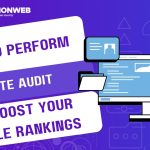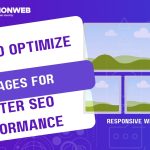Conducting a proper technical SEO can be compared to laying bricks for your house on a solid foundation. While on-page SEO focuses on optimizing your content to reflect the EEAT(Experience, Expertise, Authoritativeness and Trustworthiness) and off-page SEO focuses on building relevant backlinks to boost site’s authority, technical SEO ensures that all your SEO efforts are rewarding.
Technical SEO in 2025 has gone beyond just mere ticking boxes or following a set of rigid guidelines, instead, it is more of positioning to the dynamics of AI-powered algorithms, advanced crawling techniques, and stricter ranking factors. What this means in essence is that if your site has weak core web vitals(CVW), is not optimized for mobile-first indexing, and has slow page speed. All your efforts toward creating remarkable content and off-page SEO may not yield much in the process.
In this article, we will walk you through everything you need to know and implement to carry out technical SEO at a nearly expert level.
Table of Contents
12 Technical SEO Best Practices You Must Know In 2025
1. Focus On Technical SEO:
Many website owners and marketers focus primarily on content and backlinks, often neglecting technical SEO. However, without a strong technical foundation, search engines may struggle to crawl, index, and rank your pages properly. A site with broken links, poor URL structures, or slow loading times can significantly hinder SEO performance.
Best Practices:
• To fix this, conduct regular technical SEO audits to identify and resolve crawling and indexing issues.
• Use tools like Google Search Console, Screaming Frog, and Ahrefs to monitor your site’s technical health.
• Implement SEO-friendly URL structures, optimize internal linking, and ensure fast page speed to improve search visibility.
2. Implement Schema Markup:
Schema markup (structured data) is essential for helping search engines better understand your content. By adding schema, you increase your chances of appearing in rich snippets, knowledge panels, and featured snippets, which can drive more traffic to your site. Without structured data, your website may not fully capitalize on enhanced search results.
Best Practices:
• Use Schema.org markup for articles, products, FAQs, and reviews.
• Test structured data with Google’s Rich Results Test.
• Use JSON-LD format for structured data implementation.
Example JSON-LD structured data for an article:
{
“@context”: “https://schema.org”,
“@type”: “Article”,
“headline”: “Technical SEO: The Best Practices for 2025”,
“author”: {
“@type”: “Person”,
“name”: “JAY”
},
“datePublished”: “2025-02-22”,
“publisher”: {
“@type”: “HARMONWEB”,
“name”: “SEO Experts”
}
}
3. Use robots.txt:
The robots.txt file is a critical tool that tells search engine crawlers which pages they should or shouldn’t index. Without properly configuring it, search engines may waste the crawl budget on unnecessary pages like admin panels, login pages, or duplicate content.
Best Practices:
• Optimize your robots.txt file by allowing search engines to crawl and index essential pages while blocking irrelevant or sensitive ones like login pages.
• Use Google Search Console’s robots.txt tester to check for errors.
• Ensure you do not accidentally block important pages, which could hurt your rankings.
4. Use XML sitemaps:
An XML sitemap acts as a roadmap for search engines, helping them discover and index all important pages on your site. Without an updated sitemap, some key pages might not get indexed, leading to lower visibility in search results.
Best Practices:
• Generate an XML sitemap using tools like Yoast SEO, Rank Math, or Screaming Frog.
• Submit generated XML sitemap on Google Search Console and Bing Webmaster Tools to ensure search engines can efficiently crawl and index your pages.
• Regularly update your sitemap whenever you add or remove content.
5. Voice Search Optimization:
With the rise of AI-driven assistants like Google Assistant, Alexa, and Siri, voice search has become a crucial SEO factor. If your website is not optimized for voice queries, you could miss out on a growing segment of users.
Best Practices:
• To optimize for voice search, focus on long-tail conversational keywords and provide direct, concise answers in your content.
• Use structured data, optimize for local search, and ensure your content appears in featured snippets to increase your chances of being the top voice search result.
6. Do Regular SEO Audits:
Many websites lose rankings due to undetected technical issues like broken links, duplicate content, crawl errors, and slow page speeds. A lack of regular audits can make these problems persist, negatively impacting organic performance.
Best Practices:
• Use tools like Google Search Console, SEMrush, and Ahrefs to conduct monthly or quarterly SEO audits.
• Fix any broken links, optimize meta tags, remove duplicate content, and improve page load times.
7. AI and machine learning in SEO:
Google’s algorithms, including RankBrain, BERT, and MUM (Multi-task Unified Model), use AI and machine learning to understand user intent, content relevance, and search patterns. Websites that fail to align with these AI-driven ranking factors risk losing visibility in 2025. AI now plays a significant role in personalized search results, meaning generic and keyword-stuffed content is no longer enough.
Best Practices:
• To optimize for AI-driven SEO, focus on natural language processing (NLP) by creating content that mirrors how people naturally speak and search.
• Use AI-powered SEO tools like Surfer SEO, Clearscope, and Frase to optimize your content based on real-time SERP data.
• Ensure your site’s structure is user-friendly and semantically organized, don’t forget AI prefers well-structured, logically connected content.
8. Local SEO and Hyperlocal search trends:
With more users relying on Google Maps, local pack results, and mobile searches, local SEO and hyperlocal targeting have become critical for businesses. If your business does not optimize for local search, you risk missing out on potential customers searching for services in their area.
Best Practices:
• To improve local SEO, claim and optimize your Google Business Profile with accurate NAP (Name, Address, Phone Number) details.
• Use location-specific keywords, optimize for “near me” searches, and encourage customer reviews.
• Additionally, build local citations and backlinks from reputable local websites to increase your local search authority.
9. Optimizing For Visual Search:
Search engines are increasingly relying on image-based searches, with tools like Google Lens and Pinterest Lens allowing users to search with images instead of text. If your images are not properly optimized, you may be losing out on a massive traffic source.
Best Practices:
• To enhance visual search SEO, use high-quality, original images and optimize them with descriptive file names, alt text, and structured data (such as ImageObject schema).
• Implement WebP format for better image compression and faster loading times. Additionally, use image sitemaps to help search engines index your images more effectively.
10. Sophisticated site structure optimizations:
A poorly structured website can confuse both users and search engines, leading to lower rankings. An unorganized hierarchy, too many orphan pages, or excessive redirects can make crawling inefficient, affecting your overall SEO performance.
Best Practices:
• To optimize your site structure, maintain a clear hierarchy, ensuring your most important pages are easily accessible within three clicks.
• Use breadcrumb navigation, internal linking, and structured URL patterns to create a logical, easy-to-follow architecture.
• Regularly conduct site audits using tools like Screaming Frog to identify and fix structural issues.
11. Implement Hreflang Tag For International SEO:
For websites targeting multiple languages or regions, failing to use hreflang tags can result in incorrect pages appearing in search results, leading to a poor user experience and SEO inefficiencies.
Best Practices:
• To fix this, add hreflang annotations in your HTML <head> section or XML sitemap to indicate language and regional variations of your content.
• Use Google Search Console to test and verify your hreflang implementation to prevent errors such as incorrect indexing or duplicate content issues.
Note: This ensures that users see the correct language version of your site based on their location.
Code:
<link rel=”alternate” href=”https://example.com/” hreflang=”en” />
<link rel=”alternate” href=”https://example.com/es/” hreflang=”es” />
12. Optimize For Core Web Vitals:
Core Web Vitals (CWV) measure loading speed, interactivity, and visual stability, directly affecting search rankings. Websites with poor CWV scores suffer from higher bounce rates, lower engagement, and potential ranking penalties.
Best Practices:
• To improve Core Web Vitals, focus on reducing Largest Contentful Paint (LCP), First Input Delay (FID), and Cumulative Layout Shift (CLS).
• Optimize server response times, enable lazy loading, compress images, and use a Content Delivery Network (CDN) to enhance site speed. Use Google PageSpeed Insights and Lighthouse to analyze and improve performance.
Conclusion
Technical SEO in 2025 and beyond is now more than just fixing website errors, it is now more about adapting to the dynamics of AI-driven algorithms, mobile-first indexing, and evolving user behaviors. When you implement these 12 best practices, you ensure that your website is not only search engine-friendly but also user-focused and competitive in modern search rankings.
Regular SEO audits, structured data enhancements, and Core Web Vitals optimizations will keep your site ahead of the curve. Stay proactive, keep up with SEO trends, and continuously refine your technical SEO strategy to maintain long-term success.






Pingback: 7 SEO Best Practices 2025 for Off-Site Construction Leaders - BoxBuild